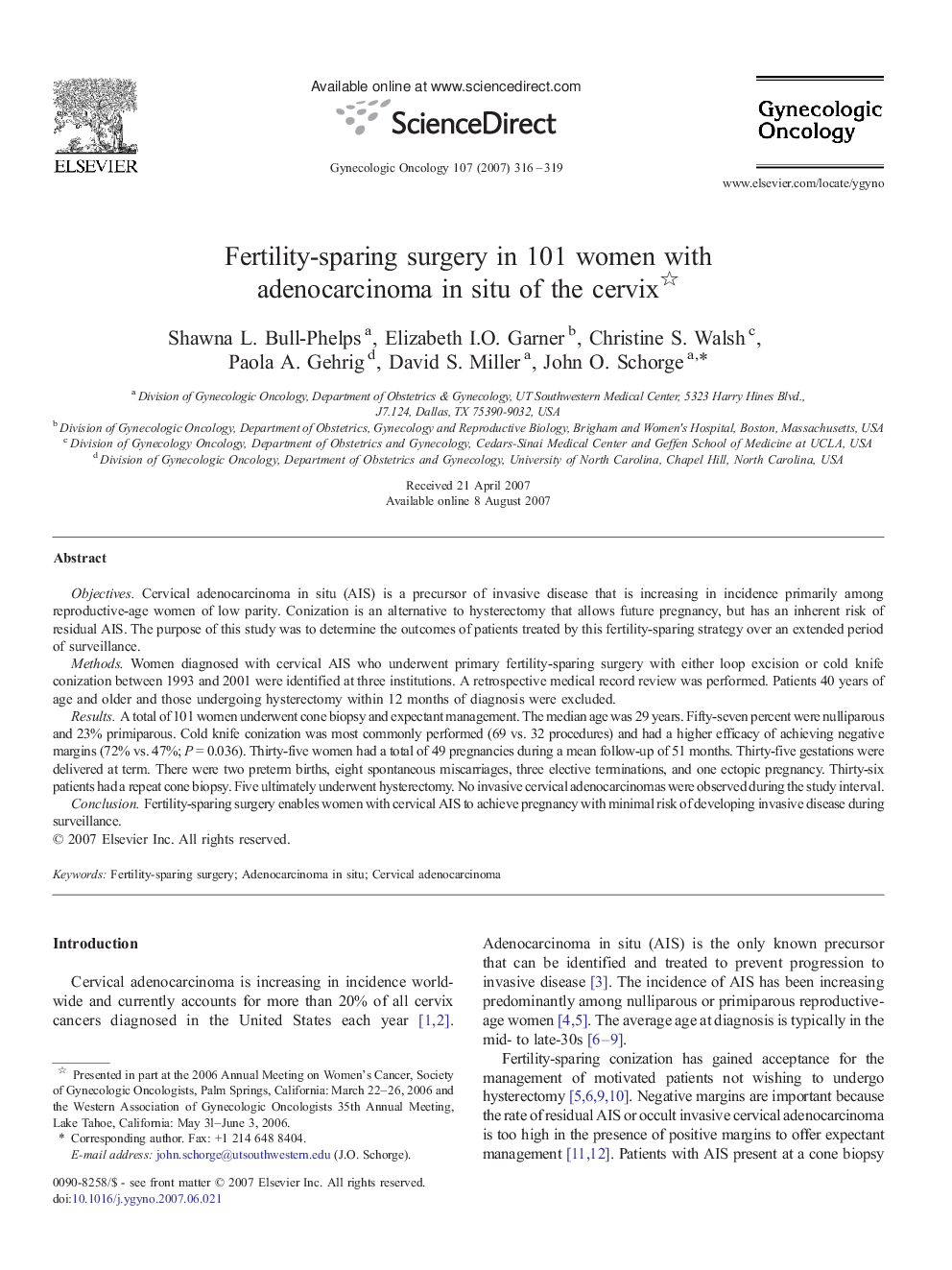| Article ID | Journal | Published Year | Pages | File Type |
|---|---|---|---|---|
| 3946193 | Gynecologic Oncology | 2007 | 4 Pages |
ObjectivesCervical adenocarcinoma in situ (AIS) is a precursor of invasive disease that is increasing in incidence primarily among reproductive-age women of low parity. Conization is an alternative to hysterectomy that allows future pregnancy, but has an inherent risk of residual AIS. The purpose of this study was to determine the outcomes of patients treated by this fertility-sparing strategy over an extended period of surveillance.MethodsWomen diagnosed with cervical AIS who underwent primary fertility-sparing surgery with either loop excision or cold knife conization between 1993 and 2001 were identified at three institutions. A retrospective medical record review was performed. Patients 40 years of age and older and those undergoing hysterectomy within 12 months of diagnosis were excluded.ResultsA total of 101 women underwent cone biopsy and expectant management. The median age was 29 years. Fifty-seven percent were nulliparous and 23% primiparous. Cold knife conization was most commonly performed (69 vs. 32 procedures) and had a higher efficacy of achieving negative margins (72% vs. 47%; P = 0.036). Thirty-five women had a total of 49 pregnancies during a mean follow-up of 51 months. Thirty-five gestations were delivered at term. There were two preterm births, eight spontaneous miscarriages, three elective terminations, and one ectopic pregnancy. Thirty-six patients had a repeat cone biopsy. Five ultimately underwent hysterectomy. No invasive cervical adenocarcinomas were observed during the study interval.ConclusionFertility-sparing surgery enables women with cervical AIS to achieve pregnancy with minimal risk of developing invasive disease during surveillance.
